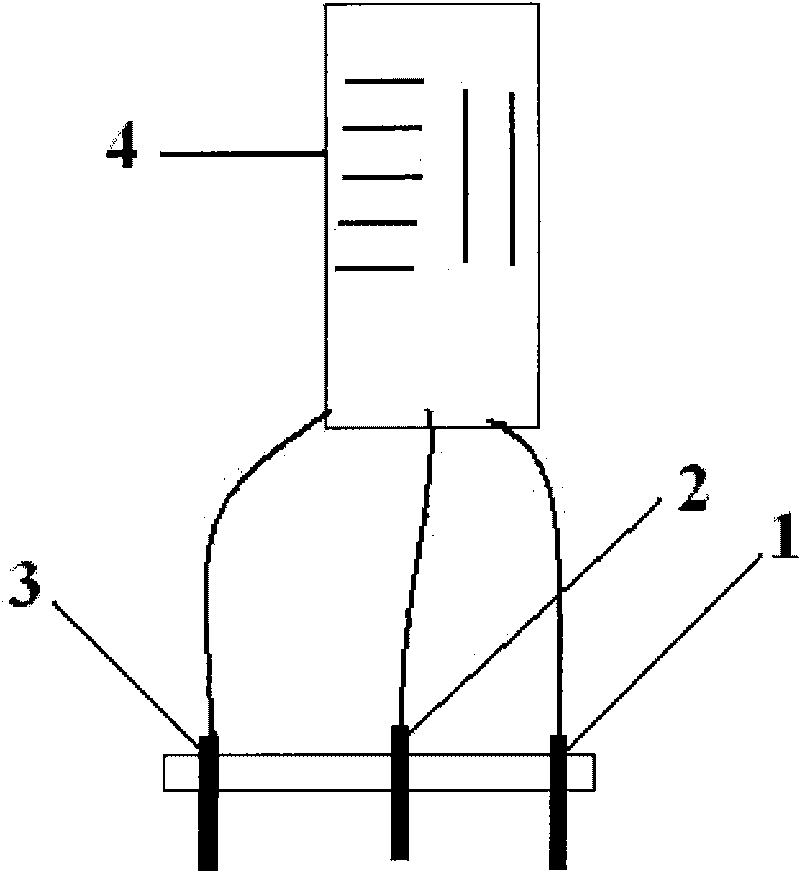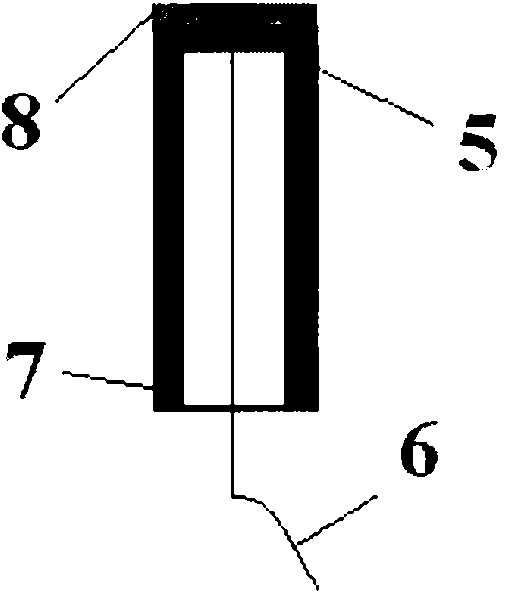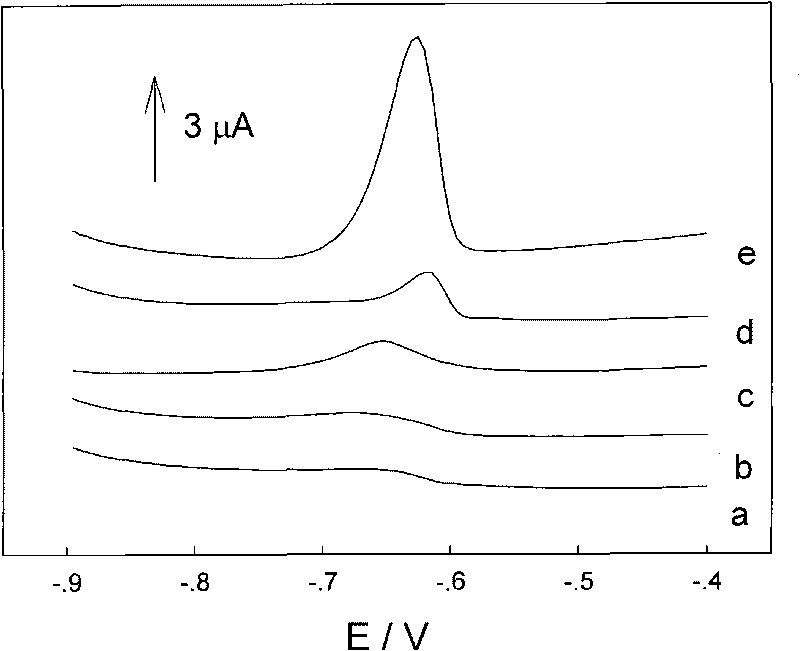Electrochemical sensor for determining concentration of heavy metal ions in water sample
A heavy metal ion, electrochemical technology, applied in the field of sensors, can solve problems such as application limitations, achieve high selectivity measurement, improve stability, and avoid interference effects
- Summary
- Abstract
- Description
- Claims
- Application Information
AI Technical Summary
Problems solved by technology
Method used
Image
Examples
Embodiment 1
[0019] Such as figure 1 with 2 The sensor shown: the working electrode 1, the reference electrode 3 and the auxiliary electrode 2 are respectively connected to the control potentiometer 4 by wire traction; the working electrode 1 is composed of a polytetrafluoroethylene tube 7 and a carbon electrode 5 sandwiched therein, and the carbon electrode The bottom end of 5 is led out by the lead wire 6, and the top end is decorated with a sensitive film 8; the platinum plate electrode is used as an auxiliary electrode, and the saturated calomel electrode is used as a reference electrode, and the current response value is determined by controlling the potentiometer.
[0020] The preparation of the sensitive membrane is as follows: adding 1 mmol of nano-hydroxyapatite, 0.5% cation exchanger Nafion (US sigma-aldrich company) and 0.5 mmol of lead ionophore in every liter of N, N dimethylformamide solution 4-tert-butylcalix[4]arene-tetrakis(N,N-dimethylethanesulfonamide) (Fluka, USA), and...
Embodiment 2
[0024] The difference from Example 1 is:
[0025] The preparation of the sensitive membrane is as follows: adding 1 mmol of nano-hydroxyapatite, 0.5% cation exchange polymer Nafion (US sigma-aldrich company) and 0.5 mmol of lead ion in every liter of N, N dimethylformamide solution Carrier 4-tert-butylcalix[4]arene-tetrakis(N,N-dimethylethanesulfonamide) (Fluka, USA), and then ultrasonically dispersed until a uniform dispersion was obtained, and 1 μL of the dispersion was uniformly coated on On the surface of the carbon electrode, the solvent was evaporated at 10°C for 10 minutes to obtain a sensitive film.
[0026] Adopt the electrode of the present invention to measure the lead ion concentration in the water sample in the presence of the interfering ions of each liter of lead ion 0.5 μ mol solution and per liter of the mixed solution of each 0.5 μ mol concentration of lead ions, copper ions, cadmium ions and mercury ions (see Figure 4 ). In the figure on the right, it can...
Embodiment 3
[0028] Sensitive film is to add 20mmol nanometer functional adsorption material, 5% Nafion by mass ratio and 10mmol copper ionophore to every liter of tetrahydrofuran solution and mix well, then take 30μL and evenly coat on the surface of carbon electrode. When preparing the sensitive film, the nano-functional adsorption material, Nafion and lead-containing ion carrier are uniformly dispersed by ultrasonic; and evaporated at 50° C. for 60 minutes after being coated on the surface of the carbon electrode. The ionophore is N, N, N', N'-tetracyclohexane-2,2'-thiodiacetylamine (Fluka, USA); the nano-functional adsorption material is nano-titanium dioxide.
PUM
 Login to View More
Login to View More Abstract
Description
Claims
Application Information
 Login to View More
Login to View More - R&D
- Intellectual Property
- Life Sciences
- Materials
- Tech Scout
- Unparalleled Data Quality
- Higher Quality Content
- 60% Fewer Hallucinations
Browse by: Latest US Patents, China's latest patents, Technical Efficacy Thesaurus, Application Domain, Technology Topic, Popular Technical Reports.
© 2025 PatSnap. All rights reserved.Legal|Privacy policy|Modern Slavery Act Transparency Statement|Sitemap|About US| Contact US: help@patsnap.com



